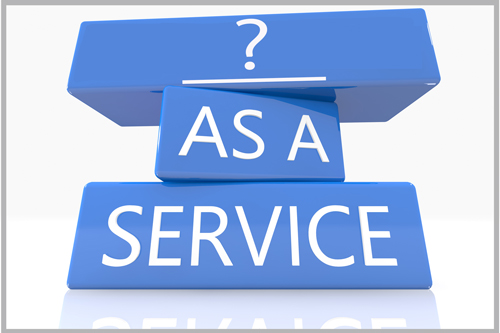
In this post, we’ve decided to break down our tech-speak into easy to understand everyday business talk to help our not so savvy IT readers understand what the most common as-a-service acronyms in our line of work mean.
Understanding these acronyms will help you learn the various service options you will most likely come across when researching business communications solutions.
A Quick Explanation of What UC Is
UC stands for unified communications. You probably already know what unified communications is, but if you don’t, UC is the collective integration of multiple communication applications across a network.
Unified communications converges the phone system along with various communication applications such as instant messaging, web and video conferencing, desktop sharing and more. The fact that the applications integrate with each other under a single platform is what makes it “unified communications”. You can check out our UC page for more information.
ShoreTel, Avaya, and Cisco are examples of UC providers. UC solutions can be managed through a platform that is either onsite (like the ShoreTel Director) or in the cloud.
We won't go into great detail at this point about what to expect in a UC solution, along with the various ways it can be deployed, as that is not the purpose of this particular article.
-aaS
This isn’t used by itself in lingo, so don’t go around saying it. We’re including it because it will help you know how to read future acronyms that come about.
aaS stands for as-a-service and is associated with monthly recurring payments for use for a service or product. You don’t own the tools that provide the service, you pay monthly or annually to be given access to use those tools (typically over the internet) which you pay for.
No one says a-a-S, it’s always preceded by another letter that defines what exactly is being offered “as-a-service”. Keep reading, you’ll understand.
SaaS
Stands for software-as-a-service. If your marketing department uses an online graphics tool like Canva, if your Sales team uses an online e-signature quoting solutions such as DocuSign or E-sign, those are all SaaS products.
You don’t own the software outright, it’s provided to you as a service. Software-as-a-Service.
XaaS
Anything as a Service. This one we think is just cool, so we are including it. It’s pretty clear that although we have limited our list to our top 5, it has the potential to be nearly limitless.
UCaaS
This stands for Unified Communications (UC) as a Service (aaS). Taking what we’ve just covered, it’s simply a unified communications solution that is provided to you as a service accessible through the internet and is hosted by a UC provider.
ShoreTel Connect Cloud (previously called ShoreTel Sky) is an example of a UCaaS. Their entire phone system and communication tools are integrated together such as their IM, presence, conference bridges, video conference, Find Me Follow Me routing options, etc.
If you’re interested in learning more about ShoreTel’s Connect Cloud offering, let us know and we’ll be glad to talk with you.
CaaS
This stands for Communications as a Service. It is similar to UCaaS, but is in general, referring to communication tools which are offered as a service but aren’t necessarily integrated within a “unified” solution like ShoreTel’s. Examples would be an instant messaging app, video conferencing app, or something more broad as VoIP.
CPaaS
This stands for Communications Platform as a Service. This one is a little different than the previous as-a-service offerings because CPaaS is an actual communications platform designed for developers to create custom communication applications, but it is done so within the cloud.
Twillio is a popular example of CPaaS, however, ShoreTel’s Summit is a CPaaS that also has far reaching potential with a focus on custom IVR applications. We wrote a nice article about custom IVR development in this post here.
Here are some useful examples of how CPaaS can be used in enterprise businesses. However these practical applications certainly aren't limited just to the enterprise market and can just as easily be applied to the SMB market as well.
We are certified developers for the Summit platform, and we work with businesses looking to extend their IVR functionality. If you're interested, let us know - the possibilities are endless what you can do with ShoreTel's Summit.
Benefits of an 'as-a-service' Model
- No upfront costs since you don’t have to purchase licenses, hardware, renewals, etc.
- Simplified infrastructure and maintenance since the platform and tools are managed by the Provider and not yourself
- Lower overhead costs since it’s the Provider’s responsibility to purchase and house the hardware needed
- Convenient predictable monthly or annual payments help with budgeting and cash flow
- Service continuity and redundancy - Providers should be using geo-redundant servers to ensure maximum uptime
Understanding these acronyms and what they mean will help your conversations with providers, vendors, or your own IT staff as you begin researching various communications tools that are available for your business.
If we can assist you with any of your communications needs, give us a call or contact us online and let us know.